Trending
Opinion: How will Project 2025 impact game developers?
The Heritage Foundation's manifesto for the possible next administration could do great harm to many, including large portions of the game development community.

Featured Blog | This community-written post highlights the best of what the game industry has to offer. Read more like it on the Game Developer Blogs or learn how to Submit Your Own Blog Post
Bleary eyes, compulsion, gamification, and greed... Steam may be Valve's greatest game, and in finding this, I almost lost myself. This is the world of Steam trading. [Originally Posted on Video Games and the Bible]

This post originally went live on Video Games and the Bible July 1st of 2015.
_____________
1:57…
1:58…
1:59…
2 AM–finally. It will take at least 5 minutes for the store to stabilize, 10 more for prices and discounts to appear correctly, and another 10 after THAT for trading on the best titles to really begin. And yet I force myself to stay awake anyway, hoping the sun doesn’t rise too quickly and reveal the tired mess hunched over the computer–me.
There’s a weird heaviness in my chest and a dull, throbbing ache throughout my body. I’ve been doing this almost a month, now. In most cases, only to buy nothing at all once I see the featured games of the day–but if I stay up a little bit later…
Maybe a user will want the extra copy of Half-Life I have in my inventory.
Maybe I can get BattleBlock Theater for a friend with a little salesmanship and a few Trading Cards.
Maybe I can find a good deal before being drowned in a tidal wave of traders advertising their wares, and scammers wishing to take advantage of those new to this way of life.
3 AM…
4 AM…
5 AM…
Yes, this (true) story probably seems a bit ridiculous. However, look into the depths of Steam Trading and you’ll find a brilliant ecosystem formed around the unique quirks of the Steam platform. Few discover this world fueled by virtual “keys” and ever cheaper games, but many who do eventually become a part of it…Or burn out along the way.
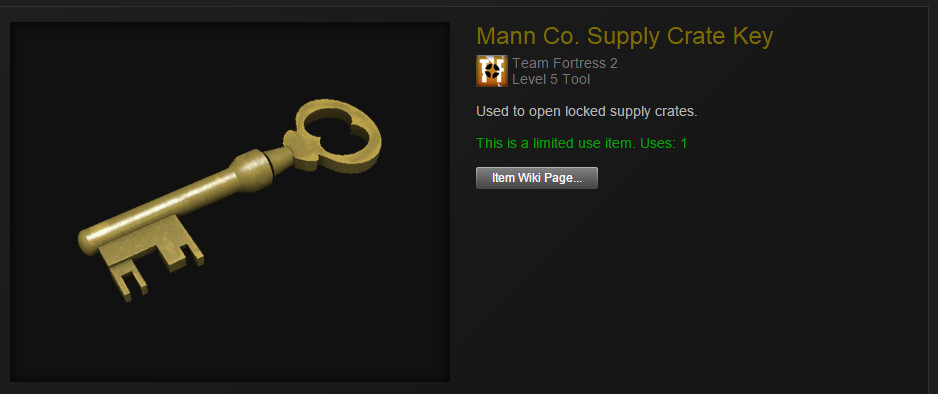
The internet may be clamoring for Half-Life 3, but I believe Valve has (perhaps unintentionally) already created its greatest game–and I can’t stop playing it.
Steam has over 125 million active users, more than 10 million of which have logged on in the past 24 hours–but it isn’t a game, you say?
With the launch of the Xbox 360 in 2005, Microsoft changed the way many approach the act of gaming by introducing “Achievements” to the mass market. These tasks, ranging from playing a level in a unique way to reaching ludicrous goals, reward players for completing them with an addictive soundbyte and an increase to their overall Gamerscore.
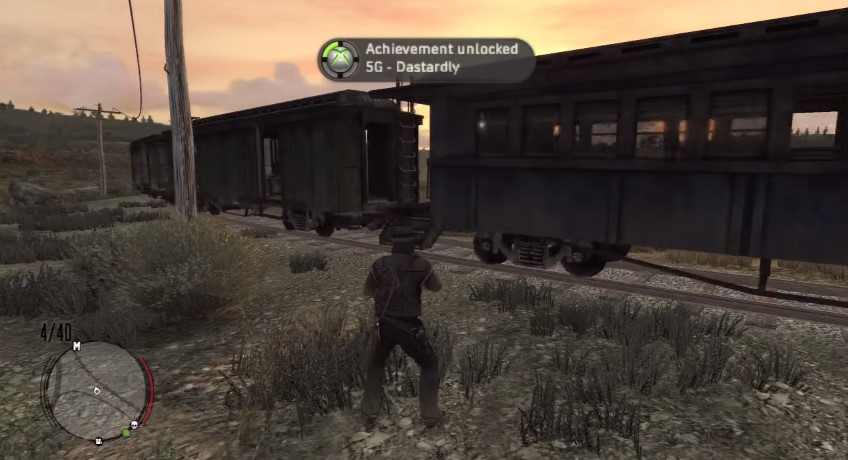
Seeing the success of this feature, Valve followed suit and added achievements to their own platform, Steam, in 2007. However, they took the concept a step further and essentially gamified every aspect of their service.
Your account “levels up” when you buy games, participate in Steam Sales, and interact with the community. This allows you to further customize your Steam profile, put more users on your Friends List, etc.
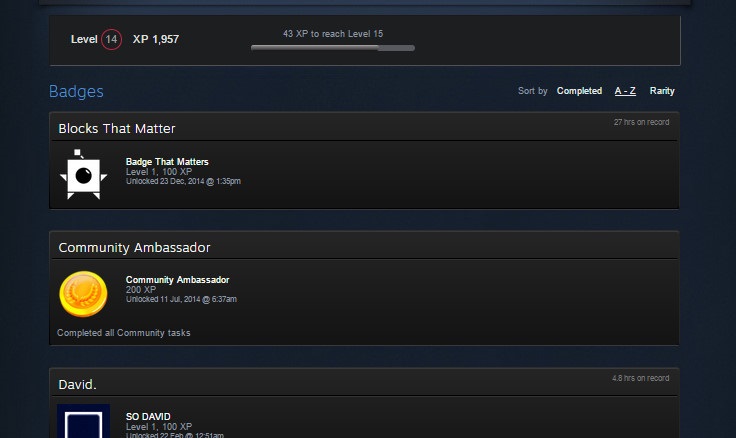
If the developer has added them, you can get “loot drops” in the form of collectible Steam Trading Cards while in-game. These can be sold, traded, or crafted into Badges to increase your Steam level.
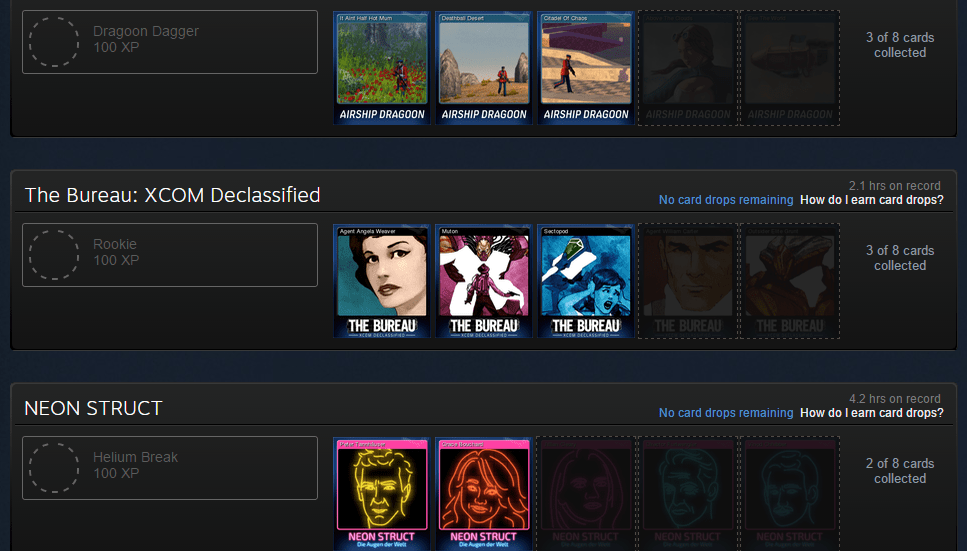
Certain titles even allow you to trade and sell items originating from the games themselves–armor, weapons, skins…Not unlike the now closed Auction House in Diablo 3, which also used real money.
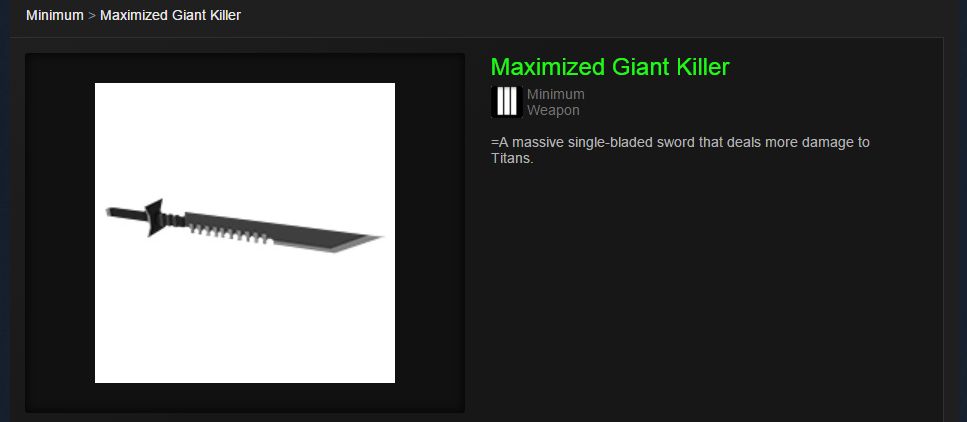
Steam transcends the limitations of a typical title found on store shelves. Through extensive gamification and a vast network of interconnected functions, it in some way integrates itself into the gaming world of everyone who uses it. It never ends or becomes less relevant. Most of its 125 million users don’t even know they’re “playing” it, allowing Steam to seamlessly blend into every portion of a user’s digital life (without inspiring pesky accusations of causing addiction or mental illness).
As a player, you’re invested in your profile, in your inventory of Steam cards and items, in your constantly expanding library of games, and in your friends…
Why leave?
Steam is a place to share content you’ve made for and about your favorite games with others, or to discuss them. A way to show off titles to friends instantaneously, and learn what your favorite personalities recommend. An avenue for aspiring developers to get their projects onto the largest gaming platform in the world…It’s groundbreaking, encompassing nearly every area of PC gaming and use with each update.
I suspect Valve had no idea that the service they originally made to patch Counter-Strike could become a centerpiece of people’s lives–which brings me to Steam trading, and by extension my spiral down the rabbit hole.

The community surrounding the marketplace, storefront, and quirks of the Steam ecosystem is perhaps the best example of how the “mechanics” driving Valve’s greatest game can be all-engrossing.
It all began with a Key.

Users quickly found that Keys like the one above could be used as currency when trading with each other due to their relatively stable value (~$2.50 USD). This changed the way certain members bought games. In an environment where AAA titles are sold in bundles or at deep discounts, what’s to stop you from making a bit of extra money, regardless of the possible loss to the developer? On the other end of the situation, why buy a game when you can just get a couple dozen keys and trade for what you want when it’s convenient?
In short, players saw an opportunity to capitalize on a temporary “gold rush” of unregulated trading–and seized upon it.
Russian traders making the most of the disparity in sale prices between regions would sell AAA games at huge discounts to Western counterparts, who would then trade them to users in their own areas for a significant profit. Buyers could feasibly keep up on major titles for fairly little. That is, if they could find a legitimate deal amidst the scammers and hackers also trawling the Trading forums.
Several traders distinguished themselves during this period by becoming wholesalers of sorts, stocking up on the latest releases by building supply chains with Russian contacts.
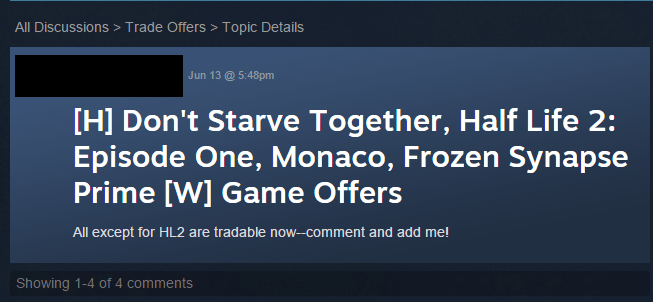
These practices continued relatively undisturbed until late 2014. Within months, Valve introduced reform after reform to stop roundabout abuse of Steam’s trading systems, and the scamming of innocent gamers. Region locking, instituted shortly before the Winter Sale that year, had the greatest effect.
By only allowing users in areas with a weak currency to trade games bought through Steam with each other, the supply chains were broken into pieces…And yet large segments of the community stay together. Just one of these groups, the Steam Trading Guild, still hosts over 50,000 members.
Of course many were (and still are) in it for profit and/or cheap games–after all, that’s the reason I began trading–but what keeps many folks around after the restrictions is the people. As sappy as it sounds, the friends they made were more valuable than the goods they deal in.
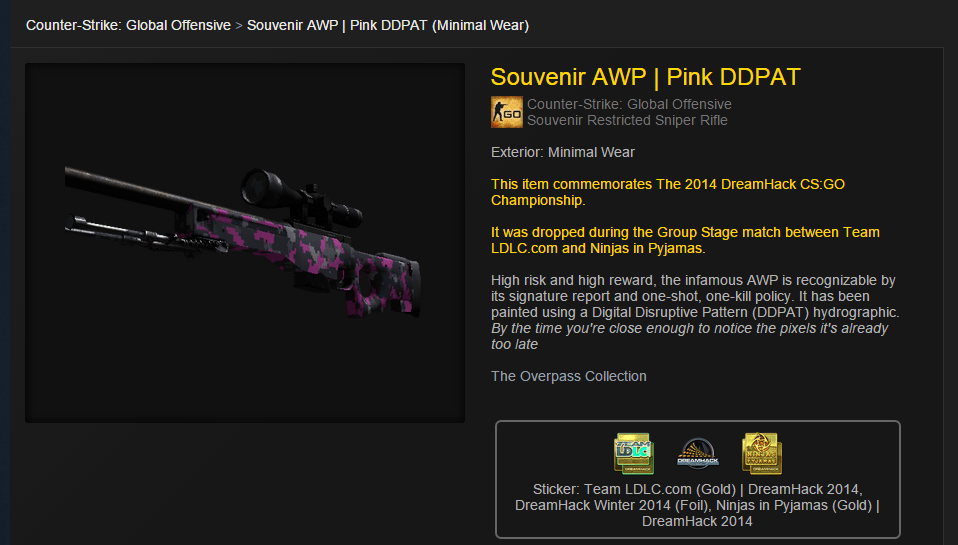
During the 2015 Steam Summer Sale, and the 2014 Winter Sale before that, I stumbled into the world of Steam Trading myself. Being an American in South Korea allowed me to trade across time zones and world regions, but also meant the storefront would only update at 2 AM my time. What started as a small effort to get rid of my extra Trading Cards (and acquire a few games in the process) gradually consumed me.
I couldn’t concentrate or sleep (which probably explains the lack of articles in December). Even when I was physically spending time with family or friends, my mind was back at the Trading Guild, strategizing. I’ve seen more sunrises through hooded, bleary eyes than I care to mention. The more I promised I’d change and failed to do so, the more I hated myself for what I was doing to my body, and seemingly couldn’t stop.
Dozens of hours down the drain to save $2.99–only to start again immediately after.
This is the dark side of gamification. Tapping into a compulsive, collective desire to endlessly see numbers go up, you feel a sense of progress before realizing the meaningless nature of this pursuit, and the illusion comes crashing down. It’s the trail of crumbs leading rats through a maze, or in my case, the trail of cheap games leading to shafts of sunlight assaulting my eyeballs at 5 o’clock in the morning.
Over a week has passed since the Summer Sale, I’m still in pain, and most of the games I “paid” so dearly for have been uninstalled.
So, with all said and done, what amazing spiritual revelation did I gain? What verse did I find to wrap everything up with a bow of Biblical knowledge?
I’m sorry, but…I don’t have anything like that.
I’m 17 years old. With college, tests, and adult life looming, every minute seems to matter so much. Every moment wasted, that much more.
I don’t have some great lesson to offer, or a testimonial of how faith can redeem any activity. Just a dull aching in my heart, and a prayer that somehow, some way, this was all worth it it. Not just the hours spent trolling Steam, rejecting and accepting trade offers, but the many more I’ve spent playing video games in general.
Every hour spent with entertainment is a guilty pleasure, because…I don’t know how many I have left.
None of us do.
Read more about:
Featured BlogsYou May Also Like